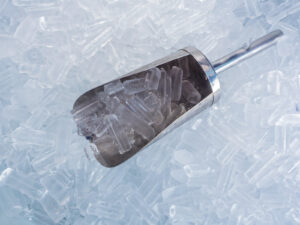Listeria monocytogenes

Listeria monocytogenes is a broad-spectrum bacterium that multiplies between -0.4 °C and 50 °C, is resistant to short-term pasteurisation and freezing as well as subliminal doses of preservatives and detergents, thrives under both aerobic and anaerobic conditions, and can inhabit environments with a pH of 4.4–9.4 (with an optimum of 7.0). It shows high motility at 22–30 °C but does not produce flagella at 37 °C. It occurs as more than a dozen subtypes (serotypes of bacilli). The serotypes considered most dangerous include 1/2a, 1/2b, and 4b, causing 95% of infections.
Listeria is a widespread bacterium in the environment. It can be found in water, soil, decaying plants, sewage, and the digestive tract of many domestic and wild animal species. Due to its resistance to environmental conditions and ability to grow at low temperatures, some foods are particularly frequently contaminated with Listeria monocytogenes. Odporność na warunki środowiskowe oraz zdolność do wzrostu w niskiej temperaturze sprawia, iż niektóre ze środków spożywczych są szczególnie często zanieczyszczone pałeczkami Listeria monocytogenes.
Bacteria of the genus Listeria are found in a wide variety of foodstuffs, particularly in low-processed foods. Plant-based products particularly susceptible to contamination include lettuce, spinach, cabbage, cauliflower, celery, broccoli, and all salads packaged in a modified atmosphere.
Infection with Listeria monocytogenes is associated with increased risk factors. Pregnant women, young children, the elderly, and people with primary and secondary immunodeficiencies, especially after transplantation, are most at risk. By contrast, people with AIDS are less likely to be infected. This is probably due to the use of cotrimoxazole as part of the prophylaxis and infection therapy, leading to the complete elimination of L. monocytogenes from the gastrointestinal tract. Interestingly, 5–10% of people are asymptomatic carriers of these bacteria in the gastrointestinal tract or vagina.
The main carrier of Listeria monocytogenes is food. According to the current Polish and EU case definition, the notification of infection is required only in the case of generalised Listeria monocytogenes infection in the form of bacteraemia, central nervous system infection, focal listeriosis of internal organs, and listeriosis of pregnant women and newborns.
The main prevention measures include the observance of hygiene rules and the consumption of products rich in vitamin C, agents destroying parasites of the digestive system, and immunity-boosting preparations, such as royal jelly. The most effective way to avoid contaminated food is to consume products that comply with GMP, GHP and HACCP systems. Listeriosis prevention measures are primarily based on protecting food and preventing the survival and multiplication of the microorganism and not just eliminating it from the environment and foodstuffs.
EFSA experts advise consumers to keep refrigerators cool to limit the potential growth of Listeria, which can be present in ready-to-eat food.
Sources:
Katarzyna Kot
Editor of “Food Safety in Practice”

The dirty truth about ice cubes
Ask yourself the question, how clean is the ice in your glass? If you are not careful, your drink has a lot of dangerous bacteria, no matter where the ice was made, whether in a pub, restaurant, ice factory, or your own home. You may think that micro-organisms do not survive in the icy conditions of freezers, but the truth is quite different and this is backed up by years of research by scientists around the world freezing bacteria and studying their survival rates.

Listeria monocytogenes
Listeria monocytogenes is a broad-spectrum bacterium that multiplies between -0.4 °C and 50 °C, is resistant to short-term pasteurisation and freezing as well as subliminal doses of preservatives and detergents, thrives under both aerobic and anaerobic conditions,

Can you get sick from contaminated ice?
There are few studies that provide information on standards for the production of ice cubes. One of them are reports released by ice machine manufacturer Ice-O-Matic. They showed that almost 40% of operators acknowledge that they did not realise how often the ice machine, especially the water filters, needed cleaning. This showed that this area is often a neglected place. In addition, despite being professionally involved in the production of ice cubes, operators were unaware that bacteria were able to survive in ice.
Stowarzyszenie Producentów i Operatorów Certyfikowanego Lodu Spożywczego, (Association of producers and operators of certified food ice) KRS [National Court Register] No. 0000784552, REGON [National Official Business Register] No. 383424111, NIP [VAT] No. 7010927104 00-630 WARSZAWA, ul. POLNA 24/7

